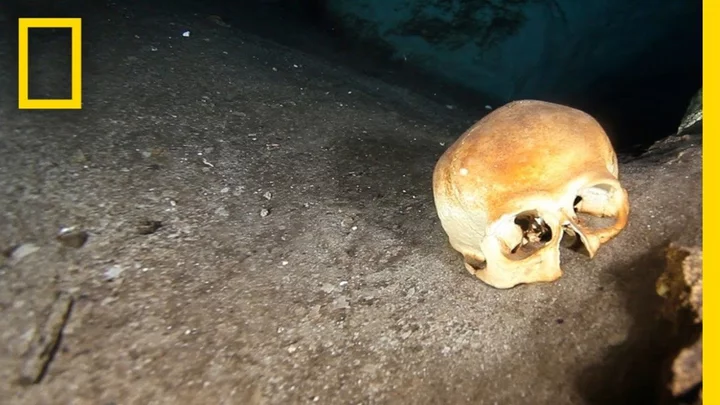
Google tells users not to press button as files disappear from Drive
Google users say their files have been disappearing as one engineer urged them not to press a button that could make the problem even worse. In recent days, users of Google Drive – which allows people to store their files in the cloud – say that those files appear to have gone missing. Some report that months of files have disappeared, with no obvious way of getting them back. The files appear to have vanished without a trace, without any sign of why they disappeared or even if they are recoverable. The problem appears to be with a recent update to Google Drive for desktop, an app that can be installed on Mac or Windows to get access to files stored on Drive. Hundreds of people are complaining about the problem in recent days, using a Google forum that allows users to request help. The number is likely to be much higher. Google says that it is not clear what the issue is, with an employee saying that the company is “investigating reports of an issue impacting a limited subset of Drive for desktop users “. The statement indicated that the company would “follow up with more updates”, but it is yet to give any information. That representative of the Google Drive team did however urge users not to click the “Disconnect account” button on the Drive for Desktop app. That could cause further problems with lost files, the Google employee going by the name Saitej suggested. Some said however that they had heard that pressing that button could reset the app, and help find the lost files. As such, users voiced fears they had inadvertently contributed to the problem. Users were also told not to delete the app data folder, and advised to back up that folder onto their hard drive if they had space. Read More Bizarre bumps are appearing on Google’s latest smartphone Google issues one-week deadline to Gmail account holders Gmail users receive urgent warning before account purge
2023-11-30 08:24

OpenAI may have made a ‘dangerous’ artificial intelligence discover that led to chaos, Elon Musk says
OpenAI may have discovered “something dangerous” that caused chaos at the company, Elon Musk has said. Recent days have seen ChatGPT creator OpenAI fire and then re-hire its chief executive, Sam Altman. Many of the circumstances of that decision still remain entirely mysterious, and it is not clear why OpenAI’s board removed Mr Altman. Elon Musk co-founded OpenAI, as part of his response to concerns that artificial intelligence could prove dangerous to humanity. But he has been critical of its recent direction, including its turn towards operating for a profit and no longer open sourcing its work. During the New York Times’s Dealbook conference, Mr Musk said that he had attempted to find out what happened behind the scenes at OpenAI, but had failed to do so. He had reached out to numerous people working at the company, including Ilya Sutskever, the OpenAI chief scientist and board member who is believed to have led the rebellion against Mr Altman, but had not heard anything. But he suggested that the company had found “something dangerous” that had caused Mr Sutskever to be concerned. He said that the most likely scenario was a worrying breakthrough that had led the company to try and avoid the danger. He was asked by journalist Andrew Ross Sorkin whether he meant that he thought something dangerous had been discovered within the company. Mr Musk said that would be his guess. In the same interview, Mr Musk once again criticised OpenAI’s move away from the open source and non-profit principles that it had been founded with. He also suggested that artificial intelligence companies were lying if they claimed their artificial intelligence systems were not trained on people’s data. But he said that any lawsuits over the issue will not be settled before we have a “digital god”, and would therefore be irrelevant. Earlier, he had told advertisers that left the company over antisemitic content to “go f*** yourself”. His profanity-laced remarks followed a moment of contrition in a New York Times DealBook Summit interview, as he first said “I’m sorry” for a tweet that agreed with an anti-Jewish post on X on Nov. 15. Musk has faced a torrent of criticism since he on Nov. 15 agreed with a user who falsely claimed Jewish people were stoking hatred against white people, saying the user who referenced the “Great Replacement” conspiracy theory was speaking “the actual truth.” On Wednesday Musk said he had “handed a loaded gun” to detractors, describing his post as possibly the worst he had made during a history of messages that included many “foolish” ones. The Tesla CEO bristled at the idea that he was antisemitic and said that advertisers who left X, formerly known as Twitter, should not think they could blackmail him, saying “fuck you” numerous times. At one point he added the words “Hey Bob,” an apparent reference to Robert Iger, chief executive of Walt Disney, which pulled ads on X. The “Great Replacement” theory holds that Jewish people and leftists are engineering the ethnic and cultural replacement of white populations with non-white immigrants that will lead to a “white genocide.” Musk‘s post drew condemnation from the White House for what it called an “abhorrent promotion of antisemitic and racist hate.” Following the post, major U.S. companies including Walt Disney, Warner Bros Discovery and NBCUniversal parent Comcast suspended their ads on X. A report from liberal watchdog group Media Matters precipitated the advertiser exit, which said it found ads next to posts that supported Nazism. The platform filed a lawsuit last week against Media Matters for defamation. Additional reporting by Reuters Read More Elon Musk publicly tells advertisers to ‘go f*** yourselves’ Elon Musk mocked for trying to resurrect QAnon Pizzagate conspiracy Elon Musk set to meet Netanyahu and hostage families in Israel Elon Musk weighs in on Dublin riots claiming country’s PM ‘hates the Irish people’ Elon Musk’s antisemitic comments have pushed X advertisers over the edge Democrats accuse Elon Musk and X of profiting from Hamas propaganda
2023-11-30 07:54

Elon Musk publicly tells X/Twitter advertisers to ‘go f*** yourselves’
Elon Musk has told advertisers to “go f*** yourselves” if they try to pull marketing from X. The chief executive of the platform, formerly known as Twitter, suggested that companies were attempting to “blackmail” him by threatening to pull ads. Mr Musk has faced criticism in recent days over a tweet that led to accusations of antisemitism. Many of the world’s biggest companies and the site’s biggest advertisers pulled their marketing from his platform in response. He initially said that he was “sorry” for the tweet and denied any suggestion he was antisemitic. But he also said that any advertisers who pulled marketing because of that tweet should “go f*** yourselves”. “Don’t advertise,” he said at the New York Times’ Dealbook Summit. “If someone is going to try to blackmail me with advertising, blackmail me with money? Go f*** yourself. Go f*** yourself. Is that clear? I hope it is.” At one point he added the words “Hey Bob,” an apparent reference to Robert Iger, chief executive of Walt Disney, which pulled ads on X. Billionaire Elon Musk told advertisers that have fled his social media platform X over antisemitic content to “go fuck yourself” in a fiery Wednesday interview. His profanity-laced remarks followed a moment of contrition in a New York Times DealBook Summit interview, as he first said “I’m sorry” for a tweet that agreed with an anti-Jewish post on X on Nov. 15. Musk has faced a torrent of criticism since he on Nov. 15 agreed with a user who falsely claimed Jewish people were stoking hatred against white people, saying the user who referenced the “Great Replacement” conspiracy theory was speaking “the actual truth.” On Wednesday Musk said he had “handed a loaded gun” to detractors, describing his post as possibly the worst he had made during a history of messages that included many “foolish” ones. The “Great Replacement” theory holds that Jewish people and leftists are engineering the ethnic and cultural replacement of white populations with non-white immigrants that will lead to a “white genocide.” Musk‘s post drew condemnation from the White House for what it called an “abhorrent promotion of antisemitic and racist hate.” Following the post, major U.S. companies including Walt Disney, Warner Bros Discovery and NBCUniversal parent Comcast suspended their ads on X. A report from liberal watchdog group Media Matters precipitated the advertiser exit, which said it found ads next to posts that supported Nazism. The platform filed a lawsuit last week against Media Matters for defamation. In the wake of the condemnation, Musk traveled to Israel and toured the site of Hamas’ assault in the country on Oct. 7. On Monday, he spoke with Israeli Prime Minister Benjamin Netanyahu on Monday in a live-streamed conversation on X. Musk on Wednesday said the trip had been planned before his message and was “independent” of the issue. Musk in Israel said he is against antisemitism and anything that “promotes hate and conflict” and stated that X would not promote hate speech. “The fact that you came here speaks volumes of your commitment to try to secure a better future,” Netanyahu told Musk during the conversation. The two men previously met at Tesla’s headquarters in California in September to discuss the merits and dangers of advanced artificial intelligence. During the conversation, which took place shortly after Musk attacked the Anti-Defamation League, Netanyahu urged the billionaire to strike a balance between the protection of free speech online and fighting hate speech. Additional reporting by Reuters Read More Elon Musk mocked for trying to resurrect QAnon Pizzagate conspiracy Elon Musk set to meet Netanyahu and hostage families in Israel Elon Musk weighs in on Dublin riots claiming country’s PM ‘hates the Irish people’ Elon Musk’s antisemitic comments have pushed X advertisers over the edge Musk files defamation suit against Media Matters over Nazi X post claims OpenAI staff ‘threaten to quit over ousting of Sam Altman’
2023-11-30 07:54

Disturbing cache of elongated human skulls discovered in flooded Mexican sinkhole
When archaeologists explored an underwater cavern in southern Mexico in 2014, they were shocked by what they found. The cavern is known as Sac Uayum, and is located in Mexico’s Yucatán peninsula. It is technically a cenote – a natural pit that comes about after limestone bedrock collapses, exposing groundwater beneath. Local villagers were said to be terrified of the spot, because pits like this were sometimes used by the ancient Maya for sacrificial offerings. Archaeologist Bradley Russell, from College of St Rose, and a group of divers scaled down roughly 20 metres into the unknown. Inside the pit were two chambers with human bones and skulls scattered across the floors of each. The skulls were elongated, as part of an ancient practice that is thought to have involved flattening people’s heads during infancy. Archaeologists still don’t know why the ancient culture did this – but it ain't pretty. The cenote sits just outside the ruins of the ancient Maya city of Mayapán, and the researchers think this shows that, like the modern day locals, the ancient Mayans kept their distance too. Local legend says that Sac Uayum is guarded by a feathered, horse-headed serpent. Older residents of the nearby village of Telchaquillo tell stories of people seeing the serpent perching in a tree, leaping up, spinning around three times, and diving into the water. Russell explained to National Geographic that the sinkhole is said to be “evil”. “To this day, people do not get drinking water from that cenote, it is generally considered taboo. “It’s off-limits, people do not let their children plan near there and there’s a lot of beliefs around this cenote having evil forces or malevolent forces associated with it. “Cenotes are important because the main access to the water that you get is through these sinkholes. “They are also believed to be access to the Mayan underworld and the homes of Gods. “Mayapan is a large city, it’s incredibly dense, there’s nothing like it in the classic period, it’s incredibly dense for Maya history, there’s nothing quite like it.” He added that the location of Sac Uayum – south of Mayapan – is a clue as to what was going on. In Maya beliefs, south is the direction associated with the underworld. Alternatively, Russell also suggested they could have been plague victims. "You wouldn't want them near the rest of the population. And you wouldn't want to drink the water either.” How to join the indy100's free WhatsApp channel Sign up to our free indy100 weekly newsletter Have your say in our news democracy. Click the upvote icon at the top of the page to help raise this article through the indy100 rankings.
2023-11-30 03:59

Water discovered leaking from Earth's crust into the planet's core
There is much we still don’t know about the inside of our planet – but scientists recently discovered water is slowly leaking down there from the surface. It’s not a simple journey. The liquid is dripping down descending tectonic plates, before eventually reaching the core after a 2,900 kilometre journey. And while the process is slow, it has over billions of years formed a new surface between the molten metal of the outer core and the outer mantle of the Earth. In a new study, scientists at Arizona State University have said the water is triggering a chemical reaction, creating the new layer, which is “few hundred kilometres thick”. (That’s “thin” when it comes to the inner layers of the Earth.) “For years, it has been believed that material exchange between Earth's core and mantle is small. Yet, our recent high-pressure experiments reveal a different story. “We found that when water reaches the core-mantle boundary, it reacts with silicon in the core, forming silica," co-author Dr Dan Shim wrote. “This discovery, along with our previous observation of diamonds forming from water reacting with carbon in iron liquid under extreme pressure, points to a far more dynamic core-mantle interaction, suggesting substantial material exchange.” So what does it mean for all of us up on the surface? The ASU release said: “This finding advances our understanding of Earth's internal processes, suggesting a more extensive global water cycle than previously recognised. “The altered ‘film’ of the core has profound implications for the geochemical cycles that connect the surface-water cycle with the deep metallic core.” How to join the indy100's free WhatsApp channel Sign up to our free indy100 weekly newsletter Have your say in our news democracy. Click the upvote icon at the top of the page to help raise this article through the indy100 rankings.
2023-11-30 03:26

Social media CEOs to testify at US Senate hearing in January
WASHINGTON The chief executives of social media companies Meta, X, TikTok, Snap and Discord will testify on online
2023-11-30 03:16

Retail traders reignite rally in GameStop shares
By Medha Singh and Saqib Iqbal Ahmed (Reuters) -Retail traders powered a nearly 20% jump in GameStop shares to a
2023-11-30 01:52

Bitcoin consumes as much water as all the baths in Britain, study claims
Bitcoin mining requires as much water annually as all of the baths in Britain, according to a new analysis of the cryptocurrency’s environmental impact. Financial economist Alex de Vries, who runs the Bitcoin Energy Consumption Index, estimated that roughly 1.6 trillion litres of water each year is required to cool the computers used to support the cryptocurrency’s network. Separate research from 2018 found that 1.6 trillion litres is how much bath water the British public sends down the plughole every year – enough to fill roughly 660,000 Olympic-sized swimming pools. The latest analysis, which was published in the journal Cell Reports Sustainability on Wednesday, suggested that a single bitcoin transaction could use as much water as a backyard swimming pool. “Many parts of the world are experiencing droughts, and fresh water is becoming an increasingly scarce resource,” said Mr de Vries. “If we continue to use this valuable resource for making useless computations, I think that reality is really painful.” The “useless computations” refer to the complex calculations required to mint new units of the cryptocurrency and verify transactions on the network. The use of water to cool the necessary hardware could be significantly reduced if miners shifted their operations underwater, with companies like Microsoft already placing some of their data centres in the ocean in order to cool them. Earlier this month, China announced that it had begun building the world’s largest underwater data centre in order to reduce electricity and water costs. Bitcoin has previously been criticised for its electricity consumption, with Mr de Vries’s Energy Consumption Index estimating that the cryptocurrency’s network uses roughly as much electricity as the country of Poland. Bitcoin advocates have refuted accusations relating to bitcoin’s electricity consumption, claiming that miners are increasingly turning to renewable energy sources as the costs of wind and solar drop. A recently published study suggests bitcoin mining could actually help speed up the transition to renewable energy, as solar and wind energy installations could earn hundreds of millions of dollars mining bitcoin during periods of excess electricity generation. ”These rewards can act as an incentive for miners to adopt clean energy sources, which can lead to combined positive effects on climate change mitigation, improved renewable power capacity, and additional profits during pre-commercial operation of wind and solar farms,” said Apoorv Lal, a doctoral student at Cornell University who was involved in the research. Read More Bitcoin mining could supercharge transition to renewables, study claims Bitcoin mining rate hits all-time high amid record-breaking prediction for 2024 Elon Musk scam ads appear on X as key advertisers depart Scientists find planets moving around in strange ‘rhythm’ Astronomers find unprecedented ‘disc’ around distant planet Scientists have cooked ‘alien haze’ that could help find life
2023-11-30 00:22

One trillion tonne iceberg escapes from Antartica and is gaining speed
The world’s biggest iceberg is drifting away from the Antarctic after having been grounded there for more than 30 years. The iceberg, which has the catchy name A23a, split from the Antarctic’s giant Filchner Ice Shelf in 1986, but has been stuck to the ocean floor since shortly after that time. Now, according to the British Antarctic Survey, it is on the move. Satellite images show the iceberg drifting past the northern tip of the Antarctic Peninsula. A23a is truly massive. It weighs nearly a trillion metric tonnes and is about three times the size of New York City. It is more than twice the size of Greater London. Scientists say the massive chunk of ice is drifting at a rate of three miles each day. “Over time, it’s probably just thinned slightly and got that little bit of extra buoyancy that’s allowed it to lift off the ocean floor and get pushed by ocean currents,” said Oliver Marsh, a glaciologist at the British Antarctic Survey. Andrew Fleming, a remote sensing expert from the British Antarctic Survey, told the BBC the iceberg had been drifting for the last year, but now appeared to be picking up speed. “I asked a couple of colleagues about this, wondering if there was any possible change in shelf water temperatures that might have provoked it, but the consensus is the time had just come,” he said. Still, some scientists are concerned about how the movement could affect wildlife. The iceberg could end up at the island of South Georgia, which is about 1,000 miles east of the southern tip of South America, which is home to seals, penguins and other seabirds. Chad Greene, a glaciologist at NASA’s Jet Propulsion Laboratory, told the New Scientist large icebergs tend to break off from Antarctica around once per decade. They then get stuck in the Antarctic’s nearly freezing waters, which staves off the melting process, but only for a while. “Icebergs this big can hang around for decades in one place, then one day decide to go for a jolly,” Greene said. “That’s when things get interesting.” How to join the indy100's free WhatsApp channel Sign up to our free indy100 weekly newsletter Have your say in our news democracy. Click the upvote icon at the top of the page to help raise this article through the indy100 rankings.
2023-11-29 22:23

How to see your Spotify Wrapped for 2023?
It's almost that time of year again, when we see how many hours we've shamelessly spent listening to mortifying music and just playing Taylor Swift on loop. Yes, Spotify Wrapped is here again and soon your social media feeds will be full of people either showing you how cool by how much Senegalese lounge Jazz they listen to or embarrassed that they still haven't moved on from The Libertines or The Strokes. Each and every year, even for the most dedicated of music lovers, Spotify Wrapped throws up countless surprises in your top artists and songs leading many to question just how it tallies what you listen to. The past few years Wrapped has arrived earlier and earlier, as reported by the Radio Times, so it's not surprise that its arrived on November 29th. Here are the dates it arrived on the previous years. 2017: 6th December 2018: 6th December 2019: 5th December 2020: 2nd December 2021: 1st December 2022: 30th November Finding your Wrapped couldn't be easier you just need to go to your Spotify app on the day it drops and it'll be there waiting for you at the top of the app alongside your saved songs and albums. Alternatively, if you just use Spotify on a laptop or desktop you can visit spotify.com/wrapped and use it from there. Spotify have never officially said how they compile their data for Wrapped but a Reddit user in 2021 revealed how they believed it works. In the post Hudsonlovestech pointed out six key takeaways that they discovered after downloading their data from the music platform. They were: This year the data was logged from January 1st 00:00 to November 15th 23:59. You have to listen to a song for more than 30 seconds for it to count in your song rankings. Your top songs are calculated by play count rather than total time listened. In your top 100 playlist only the first 10 songs are sorted by play count, the rest are close but sorted by artist. Your total time listening includes podcasts. Your top artists are calculated by total play counts rather than total time listening. If you apply this date to your own listening history then there is a chance you might discover what your Wrapped will look like this year although there is no guarantee. Meanwhile, many users on X/Twitter are posting memes, imagining what their Wrapped will look like this year. To be honest, we're just dreading seeing how much we listened to Ryan Gosling sing 'I'm Just Ken' from the Barbie soundtrack. Sign up to our free indy100 weekly newsletter Have your say in our news democracy. Click the upvote icon at the top of the page to help raise this article through the indy100 rankings.
2023-11-29 21:58

Elon Musk scam ads appear on X as key advertisers depart
Adverts promoting crypto scams are appearing on X, formerly Twitter, amid an exodus of major brands from the platform. Many of the scam ads use the likeness of Elon Musk, who bought Twitter for $44 billion last year, to promote fake cryptocurrency giveaways. The scam ads work by promoting a fake pre-sale of “X Token”, which fraudulently offers early investors large profits if they buy the cryptocurrency before it officially launches on exchanges. Some of the adverts seen by The Independent have even appeared on the profile page of Elon Musk, who has 165 million followers on X – more than any other user. The scammers have paid for the sponsored posts, providing much-needed revenue for X as the company struggles with retaining traditional advertisers. Over 100 brands and other advertisers have pulled their ads from X in recent weeks, according to internal documents seen by The New York Times, which could lead to losses of around $75 million in earnings this year. The exodus reportedly began after Mr Musk engaged with a controversial tweet about an antisemitic conspiracy theory. The X owner responded to claims that he is antisemitic by saying “nothing could be further from the truth”. Companies to have withdrawn ads include Airbnb, Apple, Coca-Cola, Disney, IBM, Netflix and Uber. X disputed the figure reported, claiming it “represented an internal exercise to evaluate total risk” and that the true figure was closer to $11 million. The emergence of scam crypto ads has already resulted in significant financial losses for X users, according to the MalwareTips forum, with some victims reporting they lost their entire crypto savings. “The anonymity of cryptocurrency enables the scammers to quickly withdraw funds without being tracked down,” a post to MalwareTips notes. A twitter-hackers-cryptocurrency-a8620436.html">2018 investigation by The Independent found that crypto scams shared on Twitter had tricked people into sending hundreds of thousands of dollars to cyber criminals posing as Mr Musk. Hackers were able to take over Twitter accounts belonging to verified brands like Matalan and Pantheon Books, before switching the name and profile picture in order to impersonate the tech entrepreneur. They then posted messages offering fake giveaways that required people to send cryptocurrency in order to verify their bitcoin address. Analysis of the addresses found that more than 400 people sent bitcoin to one address, with transactions totalling 28.2 bitcoins ($1.1m at current exchange rates). Mr Musk cited the cryptocurrency scam epidemic as one of the motivating reasons for his purchase of Twitter, pledging to fix the issue upon his takeover. “If our Twitter bid succeeds, we will defeat the spam bots or die trying,” he tweeted in April 2022. In June 2022, Mr Musk also criticised YouTube for fake cryptocurrency promotions that featured on the platform. “YouTube seems to be nonstop scam ads,” he tweeted. Efforts to defeat the bot endemic have included subscriptions and a $1 charge to new users, which was introduced in New Zealand and the Philippines last month. The “Not a Bot” subscription method is designed to “reduce spam, manipulation or our platform and bot activity,” the company said at the time. It is not clear how this approach will prevent accounts from promoting crypto scams, with all of the ads seen in October and November coming from verified X accounts. X did not respond to a request for comment from The Independent about the issue of crypto scam ads. Read More Elon Musk mocked for trying to resurrect QAnon Pizzagate conspiracy Elon Musk set to meet Netanyahu and hostage families in Israel Elon Musk weighs in on Dublin riots claiming country’s PM ‘hates the Irish people’ X introduces limits to prevent non-paying users from replying to posts
2023-11-29 21:54

How AI Can Help Clean Up the Biggest Climate Messes
Artificial intelligence is now on the agenda as world leaders, climate diplomats and thousands of others descend on
2023-11-29 21:24
